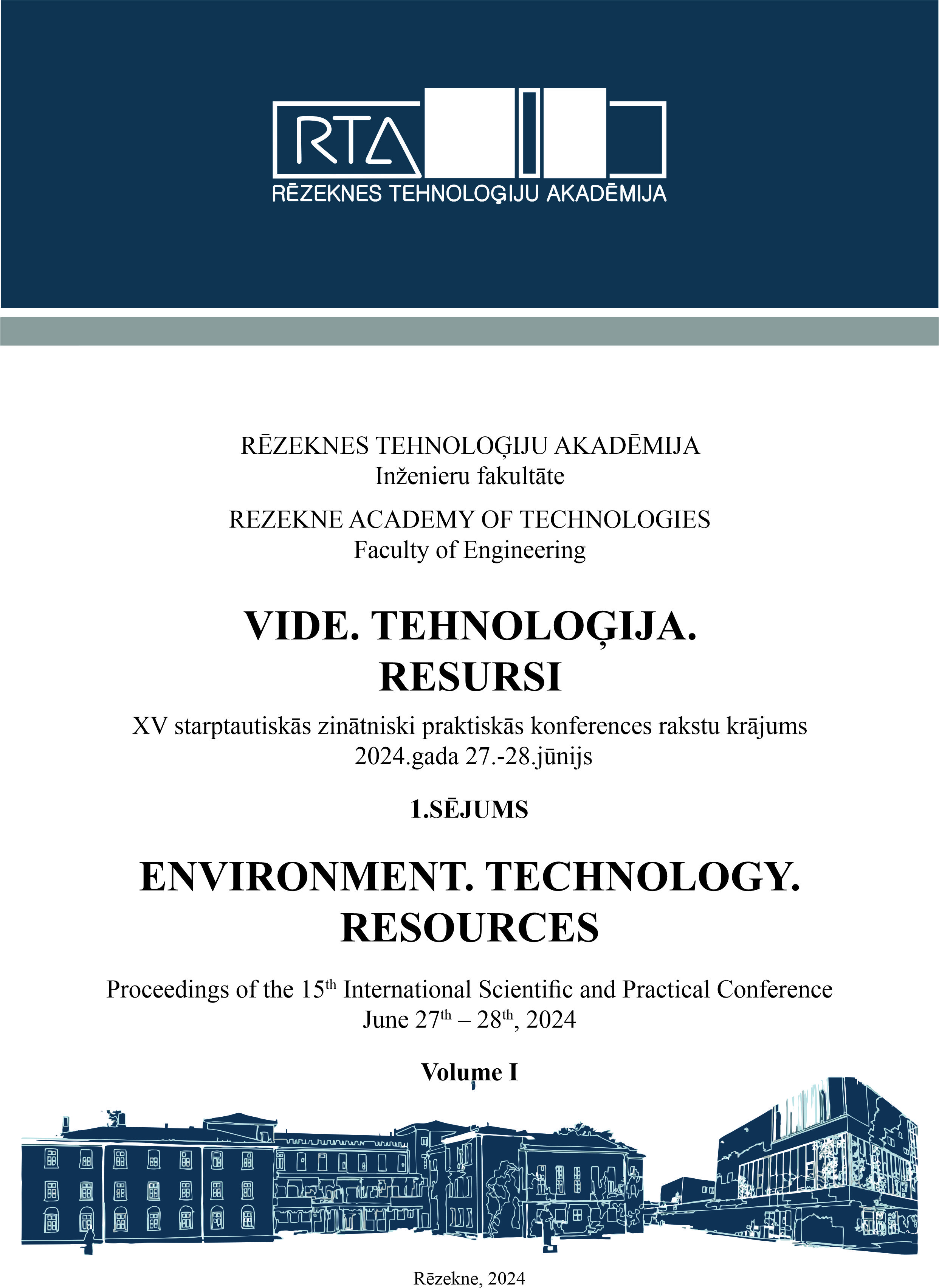MULTIFUNCTIONAL ORCHARD MODEL FOR SYNERGISTIC PRODUCTION
DOI:
https://doi.org/10.17770/etr2024vol1.8004Keywords:
symbiosis, res, model, plant production, fruit plantationAbstract
The world's growing population requires increased crop yields for their feeding. In food consumption, fruit is relied upon as one of the sources of vitamins. This necessitates an increase in perennial fruit plantations. Another important product is the consumption of animal foods and products. On the other hand, a growing population is in dire need of electrical energy to meet its needs. This also requires an increase in the production of this type of energy. Worldwide, in order to protect the environment and reduce the consumption of raw materials, it is necessary to produce electricity from RES.
This article discusses a model of complex production of plant production from an orchard, animal production and energy from a photovoltaic plant in a unit of arable area.; In practice, these are three separate productions to meet the needs of the population, which, however, have the same area and are located in the same place. Using the specifics of the individual productions, an attempt was made for the joint use of the areas, in which case it is possible to eliminate part of the various technological operations or serve as a basis for the other type of production. Such can be the irrigation of the plantation, the presence of shade from photovoltaics, fertilization of the plum plantation by the animals, fresh food for the animals, etc. The interrelations and the main points in the symbiotic production are given. The model can also be used in other types of joint "green" proceedings, after clarifying their specifics.
Downloads
References
A. Cord, B. Bartkowski, M. Beckmann, A. Dittrich, K. Hermans-Neumann, A. Kaim, N. Lienhoop, K. Locher- Krause, J. Priess, C. Schroter-Schlaack, N. Schwarz, R. Seppelt, M. Strauch, T. Vaclavik, M. Volk, “Towards systematic analyses of ecosystem service trade-offs and synergies: main concepts, methods and the road ahead”, Ecosyst. Serv., 28, pp. 264-272, 2017.
M. Mouchet, P. Lamarque, B. López, E. Crouzat, P. Gos, C. Byczek, S. Lavorel, “An interdisciplinary methodological guide for quantifying associations between ecosystem services”, Glob. Environ. Chang., 28, pp. 298-308, 2014.
C. Raudsepp-Hearne, G. Peterson, E. Bennett, “Ecosystem service bundles for analyzing tradeoffs in diverse landscapes” Proc. Natl. Acad. Sci., 107, pp. 5242-5247, 2010.
H. Tallis, P. Kareiva, M. Marvier, A. Chang, “An ecosystem services framework to support both practical conservation and economic development”, Proc Natl Acad Sci USA 105, pp. 9457–9464, 2008.
E. Bennett, P. Balvanera, “The future of production systems in a globalized world”, Front Ecol Environ 5, pp. 191–198, 2007.
P. Kareiva, S. Watts, R. McDonald, T. Boucher, “Domesticated nature: Shaping landscapes and ecosystems for human welfare”, Science 316, pp. 1866–1869, 2007.
G. Heal, A. Small, “Agriculture and its external linkages”, Gardner, G. Rausser (Eds.), Handbook of Agricultural Economics: Volume 2A, Handbook of Agricultural Economics, Elsevier, pp. 1342-1369, 2002.
W. Zhang, T. Ricketts, C. Kremen, K. Carney, S. Swinton, “Ecosystem services and dis-services to agriculture”, Ecol. Econ., 64, pp. 253-260, 2007.
A. Power, “Ecosystem services and agriculture: tradeoffs and synergies”, Philos. Trans. R. Soc. Lond. Ser. B Biol. Sci., 365, pp. 2959-2971, 2010.
M. Schipanski, M. Barbercheck, M. Douglas, D. Finney, K. Haider, J. Kaye, A. Kemanian, D. Mortensen, M. Ryan, J. Tooker, C. White, “A framework for evaluating ecosystem services provided by cover crops in agroecosystems”, Agric. Syst., 125, pp. 12-22, 2014.
D. Finney, E. Murrell, C. White, B. Baraibar, M. Barbercheck, B. Bradley, S. Cornelisse, M. Hunter, J. Kaye, D. Mortensen, C. Mullen, M. Schipanski, M. “Ecosystem services and disservices are bundled in simple and diverse cover cropping systems”, Agric. Environ. Lett., 2, 2017
J. Rodríguez, T. Beard, E. Bennett, G. Cumming, S. Cork, J. Agard, A. Dobson & G. Peterson, “Trade-offs across Space, Time, and Ecosystem Services”, Ecology and Society, 11(1), 2006.
E. Bennett, G. Peterson, L. Gordon, “Understanding relationships among multiple ecosystem services”, Ecol. Lett., 12 (2009), pp. 1394-1404, 2009.
C. Demestihas, Analysis of conflicts and synergies between multiple ecosystem services in apple orchards, PhD. University of Avignon and Pays du Vaucluse, 2017.
S. Simon, M. Lesueur-Jannoyer, D. Plenet, P. Lauri, F. Le Bellec, “Methodology to design agroecological orchards: learnings from on-station and on-farm experiences”, Eur. J. Agron., 82, pp. 320-330, 2017.
M. Kumpanalaisatit, W. Setthapun, H. Sintuya, A. Pattiya, S. Jansri, “Current status of agrivoltaic systems and their benefits to energy, food, environment, economy, and society”, Sustainable Production and Consumption, vol. 33, pp. 952-963, 2022.
Downloads
Published
Issue
Section
License
Copyright (c) 2024 Hristo Vasilev, Georgi Stanchev, Georgi Komitov

This work is licensed under a Creative Commons Attribution 4.0 International License.



